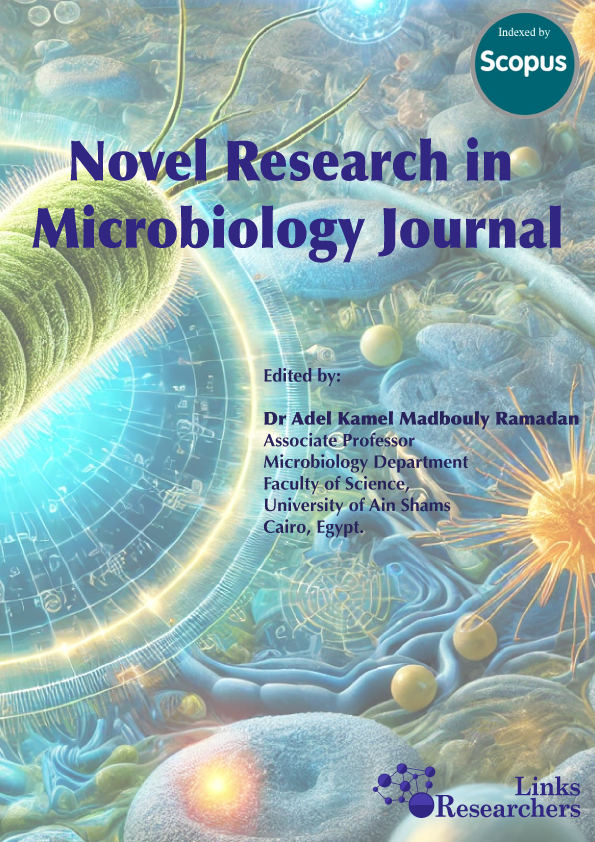An improved procedure for the isolation of Ribonucleic acid from methicillin-resistant Staphylococcus aureus
Novel Research in Microbiology Journal (2020), 4(2): 704-713
An improved procedure for the isolation of Ribonucleic acid from methicillin-resistant Staphylococcus aureus
Muhanna M. Alshaibani1*; Noraziah M. Zin1*; Juriyati Jalil2; Anis Rageh Al-Maleki3,4; Nik M. Sidik5
ABSTRACT
Extraction and purification of ribonucleic acid (RNA) from Gram-positive methicillin resistant Staphylococcus aureus (MRSA) is problematic, because the MRSA has a rigid cell wall that contains lipoteichoic acid and peptidoglycan, thus causing difficulty when utilizing the standard methods. For this reason, the aim of the current study was to improve and modify the method of extraction of RNA from MRSA, with good integrity, purity, low cost, and with saved time of extraction. A fast and an inexpensive method involving the use of acid phenol: chloroform (5: 1 [v/v]) at low pH (4.5), with lysostaphin and Triton X-100 for effective isolation of RNA from the MRSA is developed. As a result of this study, yields of this method presented high concentration of RNA (1175.26 ng/ μl/ 3 ml) of bacterial culture broth, with high RNA integration number (RIN). In similar assays such as using; the RNeasy Mini kit, GeneJET RNA purification kit, TRIzol kit and hot phenol: chloroform (1: 1 [v/v]) extraction method, they yielded low concentrations of RNA (92-700 ng/ μl); with lower purity, quantity, and also little integrity, compared to using the current acid phenol chloroform (5: 1 [v/v]) extraction method. In conclusion, this new method for extraction of RNA from MRSA can be used to save time, cost, and provide high quality of RNA.
To share on other social networks, click on any share button. What are these?






